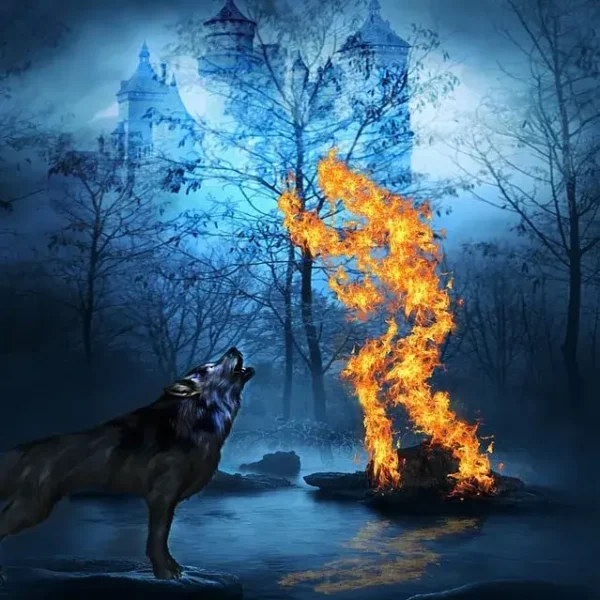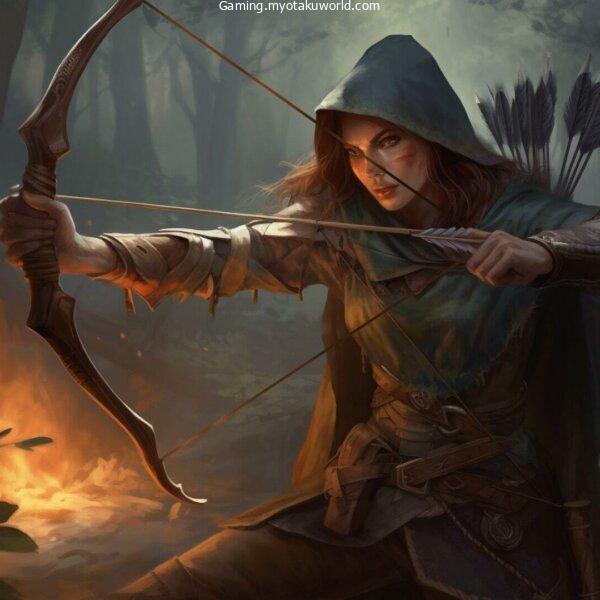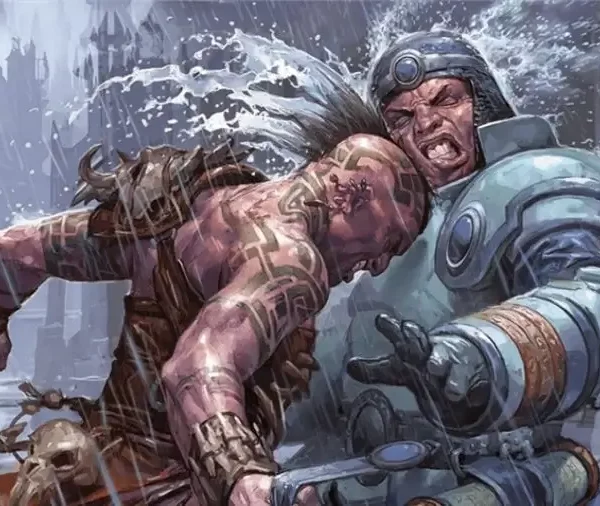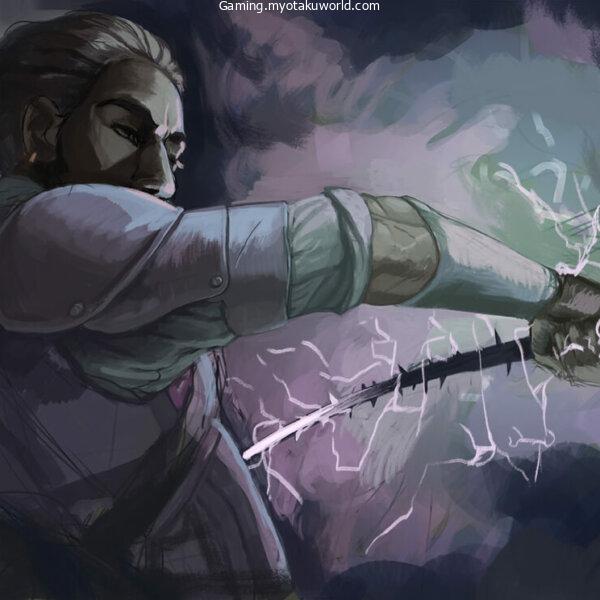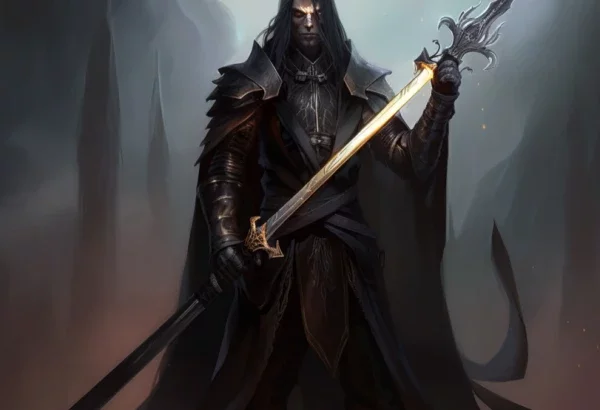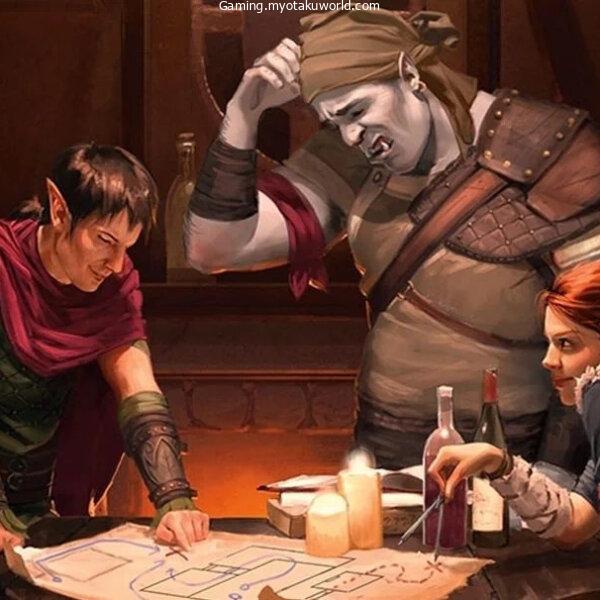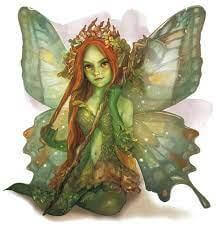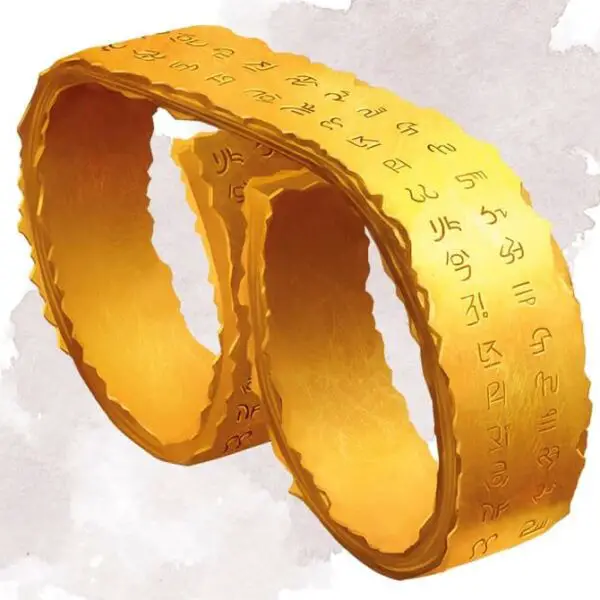Do you think demons are demons? Monsters from Hell or the Abyss are also known as demons. Do you want to know more?
The lore of D&D depicts demons operating differently than other demon representations in the fantasy realm.
This guide will explain how to deal with them. You will likely see these creatures differently from now on, so prepare for a mental shift.
What are demons?

Because of the lore, this is a difficult question to answer. First, all demons or devils can be considered fiends.
Demons and Devils are different things. They are very different and have a hatred for each other. There are three major types of demons. The first is the obyriths.
They are the oldest demonic raised and have ruled over the abyss since the beginning of time. The obyriths also created the tanar’ri, the second demon race.
They were defeated by slave rebellions and forced into hiding. They were almost eldritch and predated mortals and the gods. Many believe they are from another reality.
The demons we see today are called the tanar’ri. They are the demons who rule the abyss today and were created by evil human souls.
The tanar’ri, souls infected by chaos, are dominant. They are vice personified and many demonic creatures are tanar’ri.
They include marliths and vrocks as well as balors and the Demogorgon demon lord.
These demons were bred to do evil and destruction. They have no friends, allies, or remorse. If you’re fighting demons in the abyss you are probably fighting some kind of tanar’ri.
The Loumara, who is the youngest of the races, are often immaterial beings that want to control and cause harm. They are believed to have come from the dreams and nightmares of dead gods.
Other Demon Types
There are many horrors in the Abyss. There are demon constructs, living demons, and monsters that were created specifically by demon lords.
There are also demons so mindless and savage that they could be considered wildlife. And others cannot even be classified.
These are the only ones that are officially recognized! It doesn’t say anything about the many homebrewed or other third-party horrors DMs could place in their worlds.
Demon Princes

Some demons are not killed and others are killed. However, some demons rise to become demon princes or demon lords.
The demon lords led armies of followers and fought against their fellow demons to become the last demon prince standing.
If your party is fighting a named demonic, they will be crossing swords with a demon prince.
What are the Devils then?
Although it’s difficult to believe that there could be lawful evil in the Underdark, it does exist! In their demeanors, these devils look more like fallen angels and are not mindless fighters.
They are tricksters and liars. They want to make you give your soul away by tricking you into signing a contract, rather than killing a person and taking his soul. The hierarchy of the Devils is also very clear.
Contrary to demons, where any powerful demon can call himself a prince demon, every devil is subservient, and this is known to archdevils and finally to Asmodeus, the most powerful devil.
Each devil serves a purpose and is determined to fulfill it. Devils will even adhere to the rules laid out in their contracts.
They are well-versed in all loopholes and can stack the deck to their advantage. However, if someone beats them or outwits them, they will follow the contract and accept the loss.
The Blood War

The conflict between the demons and devils seems like a natural result of their chaotic existence. This is what led to the Blood War.
Although no one knows the exact cause of the Blood War it is well-known for the violent nature of demons and devils that has allowed it to continue for literally millions upon millions of years.
The battles center around Avernus, the first of the nine hellish layers. This is the abyss. Here, demons invade downward, while devils push up, engaging in bloody clashes to take territory that could be theirs tomorrow.
This Blood War seems to be a positive thing. The forces of evil can only attack the surface world if they are constantly tearing each other down.
Sometimes, cults that are dedicated to one side or another will try to gain favor or find secrets that help their side win the war.
Sometimes, the war can spill out of Hell into the mortal realm. This results in frequent destruction and death, with both sides not caring about the lives of mortals who are caught in their path.
The Blood War will never end. Because it is notoriously difficult to kill a demon or devil if you’re not on their home plane, both sides are constantly gaining reinforcements.
The ongoing Blood War is sometimes called “The Balance” because if one side wins, and the war ends in their favor, mortal races, and other realms will pay the price.
The remaining side will have the power to invade any territory they wish, and that is something no one wants.
The war seems to be continuing non-stop at the moment and will likely continue.
How to Fight a Demon?
Fighting demons, whether you’re in the Abyss or the mortal realm, can be difficult. You might need to adjust your tactics depending on the type of demon that you are fighting. Here are some basic tips.
First, avoid magic. Most demons are immune to spells, and they can also be resistant to fire or fire-resistant spells.
These demons can be beaten by spellcasters using the most powerful spells they have. But don’t expect much. Instead, you should be focusing on improving your party.
A second factor is that many demons are multi-attacking, so you will need as many frontline fighters to engage your enemy as possible.
The demon can spread their attacks to do less damage, or they can hurt one member of the party but the rest will attack it.
Make sure that your fighters have holy weapons, cold iron, or other magical weapons to do as much damage as possible.
You want to counter demons’ high damage resistance. Keep healing. You will be out-damaged by most of the stronger demons, so you need someone who can send healing spells.
Remember that this isn’t a battle to the death. It’s a fight for the wound. Although most demons will return to their home planes if they are killed, many will try to escape.
It can also flee if you hurt it enough. Although it will return with a vengeance later, it will flee for the first time.
How do demons attack the Mortal World?

You might be curious about how demons and devils get to our surface and attack since most of them are denizens of the abyss.
They are often summoned by powerful spellcasters or necromancers, who worship a demon prince or another named demon to increase their power or maybe even try to take control of the demon.
Sometimes magic can open portals and gates, and demons will just pour out of them. Because they are naturally aggressive, demons will attack anything that stands in their way.
Sometimes, though this is extremely rare because they must be on the battlefields during the Blood War, demon lords may lead an army to either the surface or the Underdark and launch a campaign of destruction and mayhem.
Smart DMs can create other ways for the Blood War to rise from the underworld to the top, which can increase the stakes for the players. These are going to make for some interesting adventures.
DnD Demons FAQs
What are some common demons?
Common demons are as flexible as the DM would like them to be. However, if we stick to official content, there are many demons that most adventurers will encounter. These demons are from the monster guide.
* Dretch is the lowest of all the low, and they use their large numbers to defeat foes. Fetid Cloud (1/Day) is their special attack. The dretch extends to a 10-foot radius with disgusting green gas. A creature who starts its turn within that area must make a DC 11 Constitution saving throw, or it will be poisoned until its next turn.
* Maralith’s: four-armed giant snake woman with four arms who uses swords to overcome foes. (They can make seven attacks with their tail and longswords, and one is going to hit!) The marilith can react to your attacks by adding 5 to its AC against any melee attack. The marilith must be able to see the attacker and use a melee weapon.
* Balors are the most well-known demons in 5e. They are armed with flame whips, flaming blades, and fire. They also explode when they are killed! They also explode when they die!
These demons may be “common”, but players will regret not being prepared for dealing with them.
What adventures will have you Facing Demons?
Homebrew adventures, and any other content from third parties, are irrelevant. Two adventures will have you facing demons.
* The Abyss has a lot of demonic influence during the first half, as the players escape from the Drow prison and make their way through the Underdark. A Demogorgon is even encountered in the second half! The second half features the player and their friends participating in an invasion of the Underdark to defeat the demonic princes.
* The players will be dealing with a cult in Baldur’s Gate, and eventually they will need to find a magical blade that belonged to an angel who wants to end the Blood War. This brings the party to Hell’s first layer, where they encounter political intrigue and death machines in Mad-Max-style.
There are many more official adventures where you face demons and other devils. However, these stories feature demons, various demon princes, and devils as main characters and background events. They are also very enjoyable to play with at a party.
Can Demons Be Banished?
If you’re stuck in a fight that you can’t win and you know the demon won’t leave on its own volition, your spellcaster might try to cast banish to stop them from returning to their world.
The spell will work without the need for saving throws or checks by the demon. They will not return if you can hold it up for at least one minute (10 combat rounds).
The demon will not return if you are not careful and avoid being hit with anything that can damage your concentration.
They might return, but they’ll likely target the spellcaster first, to ensure that they don’t pull off another similar trick.

